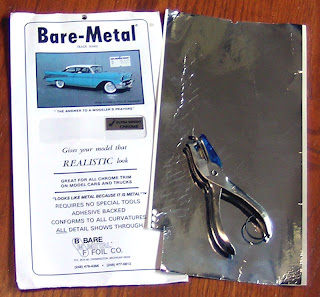 A common sight in Japan are these traffic mirrors. They allow drivers to see what is around a blind corner. You see these at intersections or sharp curves where the streets are very narrow, or where a driveway enters the street.
A common sight in Japan are these traffic mirrors. They allow drivers to see what is around a blind corner. You see these at intersections or sharp curves where the streets are very narrow, or where a driveway enters the street.Most of them are round but sometimes they are square. They vary in size with the round ones appearing to range between 2 and 3 feet in diameter. They come in doubles or singles, and are almost always mounted on orange posts.
I knew this was something I wanted to have on the modules but could not find any models of them so set out to make my own.
Here's what I came up mostly from my scrap box parts and a couple hours work.
I used a hole punch to get a disk of .020 styrene, then added a strip of .010 x .040 styrene around about 1/3 of the top edge of the disk. For the convex shape I used bubbled up flash piece from back of cast resin a vehicle tire. The pole is .020 brass wire bent at a right angle at the top with the shorter part glued into a hole in the back of the mirror.

This assembly then got painted Floquil reefer orange. To get the mirror effect I used a product called Bare Metal Foil shown in this photo. I used the hole punch again to get a matching disk and then installed this over the convex shape of the mirror.
I know I'm going to want more of these mirrors for this and other projects. The mirror assembly is good candidate for resin castings so the next one is going to be the master for a mold.

























